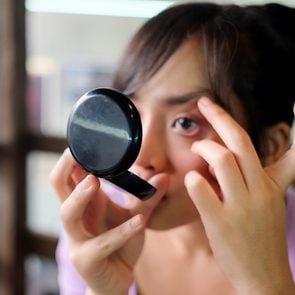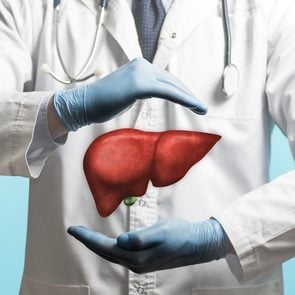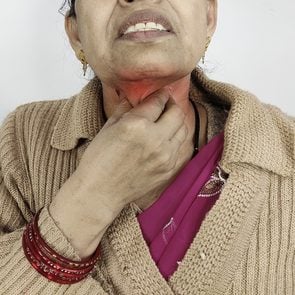Doctors Said Her Pain Was a Result of Being Overweight—They Were Wrong
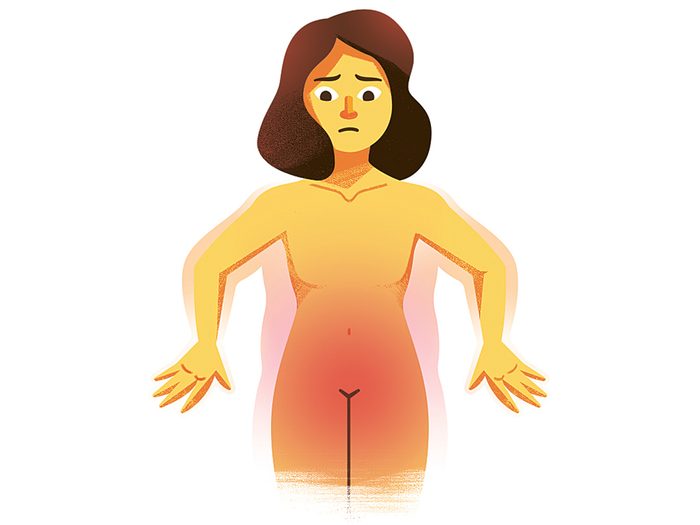
Even after Gia lost 45 kilograms, her unbearable period pain only seemed to get worse...
In her late 30s, Gia Laurent’s monthly menstrual cycle became more than just a minor annoyance. “Five days out of every month, I could barely leave my house,” she recalls. She tried treating the intense cramps with over-the-counter pain relievers, but reporting to work at her government job in Toronto was often out of the question. “The bleeding was so heavy, I couldn’t walk from my car to my office without detouring to the washroom to change the pad I’d soaked through.”
Since childhood, Laurent had harboured a fear of doctors and hospitals that she couldn’t quite explain. She had also struggled with depression, eating disorders and her weight since she was 19, when her boyfriend died in a motorcycle crash. “I became obsessed with food,” she remembers. “I fed the emptiness inside me.” By the time her menstruation trouble started, she was carrying 177 kilograms on her 165-centimetre frame.

At age 42, fed up with the pain, she found the courage to visit her GP. Her doctor blamed Laurent’s weight. “She told me, ‘The reason your periods are so painful is because you’re a big girl,’” Laurent says. There’s science behind the diagnosis: obesity, according to one Australian study, is associated with more painful periods because a greater percentage of body fat may contribute to higher levels of estrogen.
The doctor attributed the heavy bleeding to perimenopause, a normal phase of hormonal fluctuations that begins a few years before menstruation stops completely. The doctor sent her on her way with prescriptions for iron supplements and the prescription painkiller naproxen. She also suggested Laurent should consider gastric bypass surgery.
Laurent left feeling defeated. Desperate for relief, she dieted and exercised over the next year, losing about 45 kilograms. “I thought, I’ll show her,” she says.
But the nightmarish periods didn’t abate—in fact, by the end of 2019, they were worse. The doctor was shocked at her dramatic weight loss, but other than switching her to a slightly more effective iron supplement, she didn’t propose further diagnostic tests for Laurent’s menstrual pain and bleeding. Then the pandemic hit, and Laurent avoided her doctor entirely, resigned to suffer in silence. She felt constant fatigue and could barely make it through a workday. “As soon as I logged out of remote work, I’d go straight to bed,” she says.

One night in February 2021, Laurent was cooking dinner at home, where she lived with her parents. Suddenly overwhelmed by pain, she fell to her knees on the kitchen floor. Her parents called 911 and an ambulance took her to the emergency room at Mackenzie Health, in Richmond Hill, Ontario. Blood tests showed that she was severely anemic, and an ultrasound scan showed several large masses around her uterus, along with ovarian cysts the attending physicians would later suspect were infected.
Laurent was admitted for five days, receiving a blood transfusion and antibiotics. A few weeks later, she was referred to Dr. Andrea Simpson, a gynecologic surgeon at Toronto’s St. Michael’s Hospital, for surgical investigation. During surgery, Simpson found evidence of endometriosis, a painful disorder where tissue similar to the uterine lining grows outside the uterus. She inserted an intrauterine device (IUD) containing hormones that would lighten Laurent’s periods, and biopsied several fibroids and the uterine lining to check for malignancy.
Laurent was sent home to recover and waited several weeks for Simpson to call with the results from the pathology report. Simpson had already run a cancer antigen screening blood test to check for the presence of a protein called CA 125, and when Laurent’s results came back high, she explained that it wasn’t abnormal to see this type of reading in someone with endometriosis. But when Simpson called with the results of the biopsy, it was positive for endometrial cancer, which is cancer of the uterine lining. Laurent went numb. “I don’t think I heard anything after the word ‘cancer,’” Laurent says. “It was as if my ears shut down, as did my brain.” She wept quietly as her mother sat beside her on the couch, rubbing her shoulders.

Simpson recommended a total hysterectomy. In September 2021, Laurent returned to the operating room to have her uterus, cervix, fallopian tubes and ovaries removed, as well as to repair an abdominal hernia.
Luckily, since the surgery was a success and her cancer was caught in the early stages, Laurent didn’t require chemotherapy or radiation. Endometrial cancer has a generally favourable survival rate, with 83 per cent of patients living beyond five years. Laurent, now 48 years old, is currently in remission. She’s back at work and has taken great strides toward a full recovery from her years-long ordeal. Despite fatigue from her lingering anemia, she regularly walks some 10,000 steps a day and has taken up cycling, swimming and weight training.
Simpson says Laurent’s cancer could have been diagnosed much sooner if her family doctor had ordered an endometrial biopsy. It’s a minimally invasive procedure that can be performed in-office by a gynecologist. “An endometrial biopsy is the gold standard for diagnosing endometrial cancer in anyone with abnormal bleeding of the uterus,” Simpson says. “It’s recommended for any bleeding after menopause and heavy bleeding over the age of 40, as well as for patients under 40 with risk factors—and obesity is a major one.”
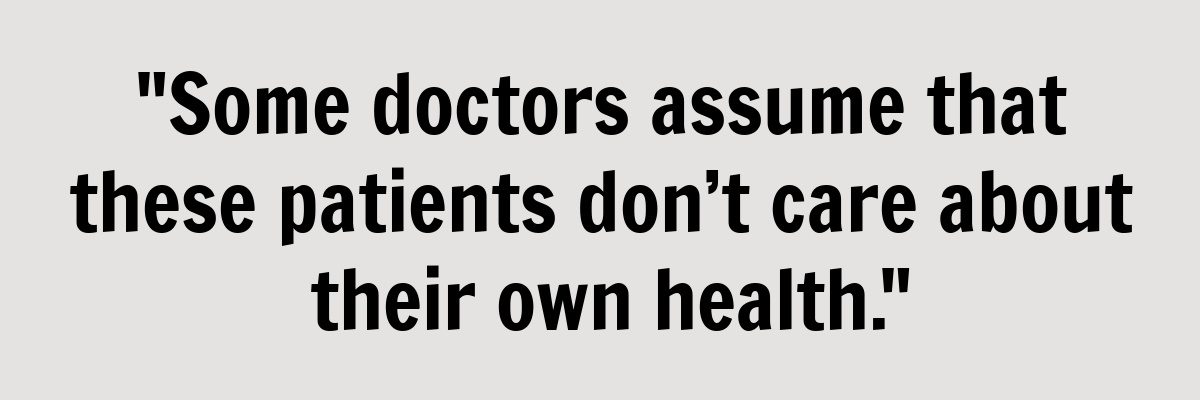
Unfortunately, says Simpson, it’s common for overweight patients to receive substandard health care. “Weight is one of the last socially acceptable stigmas in society,” she says. “Some doctors assume that these patients don’t care about their own health, leading them to internalize these experiences and avoid health care altogether.”
“These were the first health care providers to really treat me like a human being,” says Laurent.
Next, read the story of another woman whose period pain was dismissed by doctors—until an ultrasound revealed something strange…
